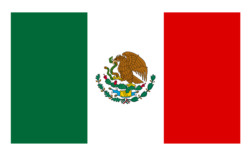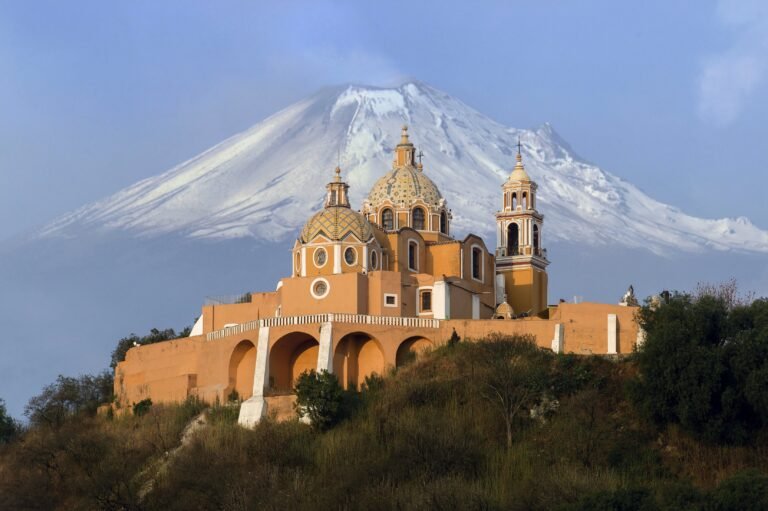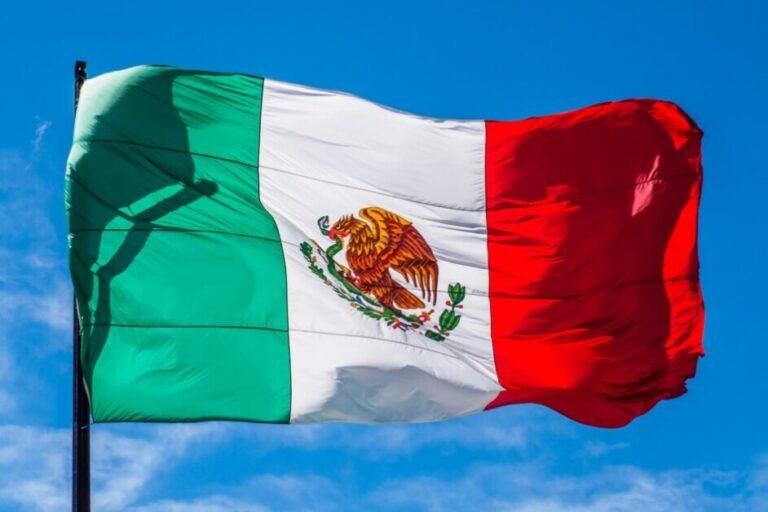Which Flag Was First Mexico Or Italy?
When it comes to the age-old question of which flag came first, Mexico or Italy, it’s not as straightforward as you might think. This puzzling query has piqued the curiosity of many, wondering how these two nations’ flags came into existence. To shed some light on this intriguing topic, we’ll delve into the rich history and symbolism behind the Mexican flag, exploring its origins and cultural significance. We’ll also take a peek into the fascinating story of Italy’s flag, uncovering its roots and the evolution it has undergone throughout the centuries. Brace yourself for a captivating journey through time, where we’ll unravel the mysteries surrounding these iconic flags.

History of Mexico’s Flag
Flag of the Aztecs
The history of Mexico’s flag dates back to the time of the Aztecs, a powerful pre-Columbian civilization that existed from the 14th to the 16th centuries. The Aztecs had a complex society that cherished symbols and colors, and they used various flags and banners to represent their empire. The most prominent flag was a royal banner known as the “Pendón de Cuauhxicalli,” which featured a golden eagle perched on a cactus, devouring a serpent. This image would later become a vital element in the Mexican flag’s design.
Spanish Conquest and the Adoption of the Spanish Flag
In 1521, the Spanish conquered the Aztec Empire, and Mexico became a part of the Spanish colonial empire. The Spanish introduced their flag, commonly known as the “Burgundy Cross,” to Mexico. This flag consisted of a red cross and four white quadrants. It symbolized the Spanish monarchy and the Catholic religion, which played a significant role during the colonial period.
The First Mexican Flag
However, as the desire for independence grew among the Mexican population, the need for a distinct national identity became crucial. On September 16, 1810, the “Grito de Dolores” (Cry of Dolores) marked the beginning of the Mexican War of Independence. It was during this time that the first Mexican flag, known as the “Flag of the Army of the Three Guarantees,” was created. This flag featured three vertical stripes: green on the left, white in the middle, and red on the right. The green represented independence, the white symbolized purity and the Catholic faith, and the red stood for union and equality.
History of Italy’s Flag
Origin of the Italian Flag
Italy’s flag, also known as the “Tricolore,” has a history that dates back to the late 18th century. The flag’s design was heavily influenced by the French Revolution and the ideals of equality, freedom, and brotherhood. The French tricolor flag, with its blue, white, and red horizontal stripes, served as inspiration for the Italian flag.
Flag of the Kingdom of Italy
The Kingdom of Italy was established in 1861, unifying various regions of the Italian peninsula under one monarchy. The Italian flag we know today, with its three vertical stripes of green, white, and red, became the official national flag of Italy at that time. The green stripe represents hope, the white symbolizes faith, and the red represents charity and love.
Comparison of Flag Designs
Mexican Flag Design
The Mexican flag’s design consists of three vertical stripes: green on the left, white in the middle, and red on the right. In the center of the white stripe, there is the Mexican coat of arms, featuring an eagle perched on a cactus, devouring a serpent. The coat of arms represents the Aztec heritage, showcasing the story of the founding of Tenochtitlan, which is now Mexico City.
Italian Flag Design
The Italian flag design is composed of three vertical stripes as well: green on the left, white in the middle, and red on the right. However, the Italian flag does not have any additional symbols or emblems within the stripes.
Symbolism and Meaning of the Flags
Symbolism of the Mexican Flag
The Mexican flag’s symbolism is rich and rooted in the country’s history. The green stripe represents hope, prosperity, and the Mexican people’s desire for independence. The white stripe symbolizes purity and the Mexican nation’s Catholic faith. The red stripe signifies the bloodshed and valor of the heroes who fought for Mexico’s freedom and the union of its people. The central coat of arms embodies Mexico’s ancient Aztec heritage and its ongoing struggle for independence.
Symbolism of the Italian Flag
Similarly, the Italian flag’s colors hold deep symbolism. The green stripe represents the lush Italian landscapes, forests, and fields. The white stripe symbolizes the snowy Alps and the purity of the Italian people. The red stripe represents the bloodshed during the various struggles for the unification of Italy and the love Italians have for their country.
Recognition of the Flags
International Recognition of the Mexican Flag
The Mexican flag is widely recognized and respected worldwide. It is included in the list of national flags flown in the United Nations headquarters, symbolizing Mexico’s role as an influential member of the international community. The Mexican flag is also honored and displayed during international events, such as sports competitions and diplomatic meetings, where it represents Mexico’s rich cultural heritage and its contributions to the global stage.
International Recognition of the Italian Flag
Similar to the Mexican flag, the Italian flag is recognized globally and is one of the most distinguishable national flags. It is flown in various international organizations, including the United Nations. The Italian flag serves as a proud symbol of Italy’s accomplishments in art, cuisine, fashion, and its historical and cultural contributions to the world.
Popularity and Usage
Popularity of the Mexican Flag
The Mexican flag is highly popular and widely used within Mexico and by the Mexican diaspora around the world. It is proudly displayed during national holidays, such as Independence Day, and is commonly seen in government buildings, schools, and private residences. The flag is also seen at sporting events, parades, and other cultural celebrations as a symbol of Mexican pride and unity.
Popularity of the Italian Flag
The Italian flag is immensely popular both within Italy and internationally. It is prominently displayed during national holidays, such as Republic Day, and is commonly seen in government offices, schools, and Italian households. The flag is also widely used in cultural events, trade expos, and celebrations of Italian heritage, showcasing the Italian people’s strong sense of national identity and pride.
Historical Significance
Mexican Flag’s Role in Independence Movements
The Mexican flag played a pivotal role in Mexico’s struggle for independence from Spanish colonial rule. It became a symbol of unity and resistance against oppression, rallying the Mexican people to fight for their freedom. The flag waved proudly as Mexican revolutionaries and heroes like Miguel Hidalgo, José María Morelos, and Emiliano Zapata led the charge towards independence, inspiring generations of Mexicans to continue the fight for social justice and equality.
Italian Flag’s Role in Unification Movements
Similarly, the Italian flag played a crucial role in the unification of Italy. During the 19th century, Italy was divided into smaller states controlled by foreign powers. The Italian flag became a powerful symbol of the Risorgimento, the movement for Italian unification. Patriots like Giuseppe Garibaldi and Count Camillo di Cavour fought tirelessly to unite the Italian states under one flag, leading to the birth of modern Italy.
Evolution and Modifications
Evolution of the Mexican Flag
Throughout its history, the Mexican flag has undergone several modifications and alterations. The first Mexican flag had a slightly different shade of green and a different placement of the coat of arms. Over the years, the size, dimensions, and precise design of the coat of arms have also been adjusted. However, the essential elements of the Mexican flag, including the tricolor composition and the image of the eagle and serpent, have remained constant.
Evolution of the Italian Flag
The Italian flag’s design has remained unchanged since its adoption as the national flag in 1861. The colors and proportions have remained consistent, symbolizing the stability and unity of Italy. However, minor adjustments have been made to the shades of green and red over time to reflect the desired color tones more accurately.
Cultural Significance
Mexican Flag in Mexican Culture
The Mexican flag is deeply woven into the fabric of Mexican culture and identity. It represents the rich history, vibrant traditions, and diverse heritage of the Mexican people. The flag is present in various aspects of Mexican life, from art and literature to music and cuisine. Mexican festivals and celebrations often feature decorations incorporating the flag’s colors, fostering a sense of national pride and unity.
Italian Flag in Italian Culture
Similarly, the Italian flag is deeply ingrained in Italian culture and holds immense cultural significance. It symbolizes Italy’s centuries-old cultural heritage, exquisite cuisine, iconic fashion, and unparalleled artistic contributions. The Italian flag is actively celebrated and displayed during cultural events, festivals, and exhibitions, reflecting the pride Italians feel for their unique cultural and historical legacy.
Conclusion
The history of Mexico’s flag traces back to its ancient Aztec roots and the subsequent periods of Spanish conquest and independence struggles. The Mexican flag symbolizes independence, unity, and the rich cultural heritage of Mexico’s people. In contrast, the Italian flag represents the unification of a fragmented nation and embodies the pride, passion, and diverse cultural achievements of Italy. Both flags hold deep meaning and recognition both nationally and internationally, serving as powerful symbols of identity, history, and cultural significance.











